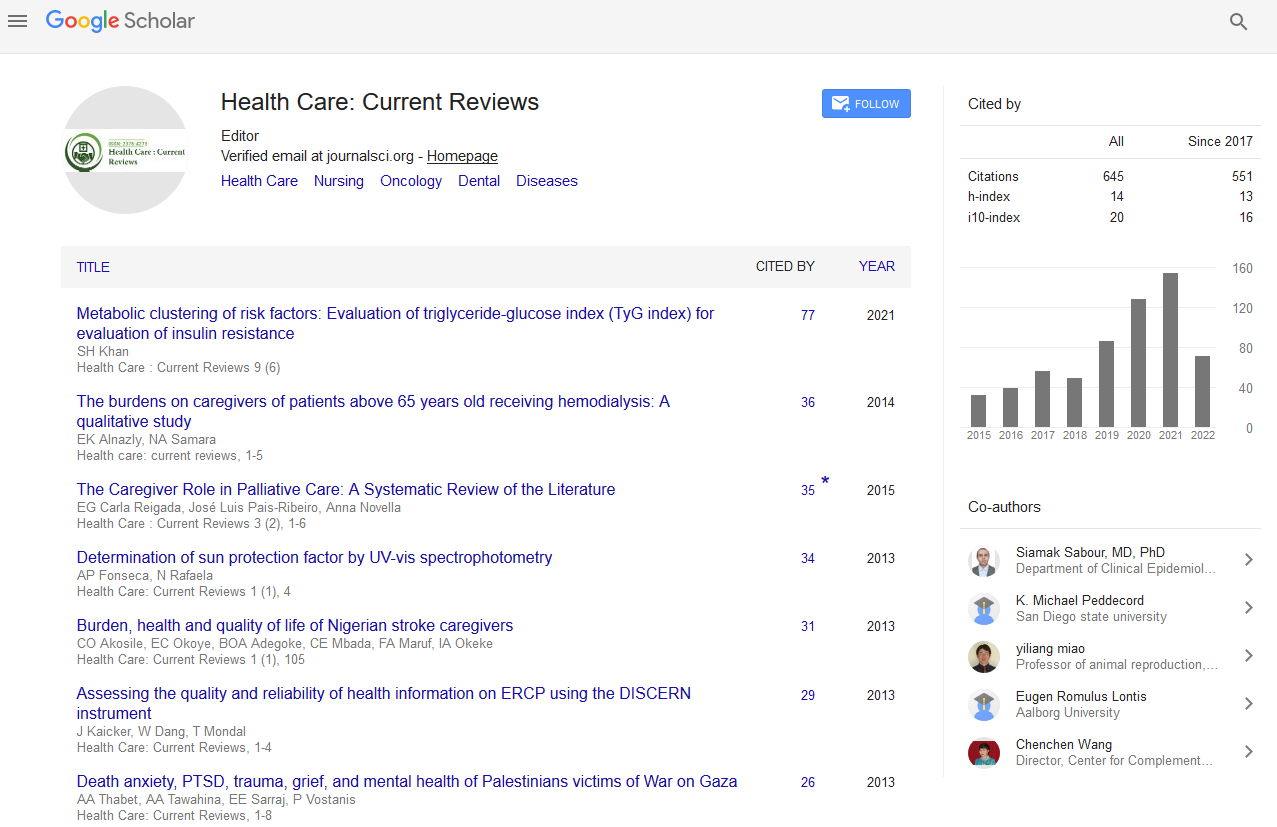PMC/PubMed Indexed Articles
Indexed In
- Open J Gate
- Academic Keys
- RefSeek
- Hamdard University
- EBSCO A-Z
- Publons
- Geneva Foundation for Medical Education and Research
- Google Scholar
Useful Links
Share This Page
Journal Flyer

Open Access Journals
- Agri and Aquaculture
- Biochemistry
- Bioinformatics & Systems Biology
- Business & Management
- Chemistry
- Clinical Sciences
- Engineering
- Food & Nutrition
- General Science
- Genetics & Molecular Biology
- Immunology & Microbiology
- Medical Sciences
- Neuroscience & Psychology
- Nursing & Health Care
- Pharmaceutical Sciences
Abstract
Application of Integrated Medical Care Model (Hospitalist) in Emergency Department and its Efficiency and Outcome: 4 years' Experience in Taiwan
Tzu-Chieh Weng, Chien-Cheng Huang, Chun-Cheng Zhang, Hsin-Kai Huang, Meng-Chieh Wu, Chien-Chin Hsu and Kao-Chang Lin
Background: The hospitalist model (HOS) setting at wards can improve quality of patient care and shorten length of stay, however, their efficacy at emergency department (ED) is still lacking in Taiwan.
Objective: To realize if HOS is working at ED in a designed academic care program. Design/setting: Before-and-after intervention of HOS in a 1200-bed tertiary medical center in Taiwan.
Measurement: A three-shift duty with 8 internal subspecialists was adapted for their working schedule in 3:1:1 physicians round. From 2012~2016, 4 years data was collected retrospectively such as length of stay, over-waiting (>48 h) period, mortality, 6 and 24 h deterioration after hospitalization and satisfaction questionnaire were analyzed before and after HOS intervention was compared.
Results: There was no significant difference in patient number, age and sex before and after HOS program at ED. In total, 4 years data analyzed (520,409 ED visitors, 111,949 hospitalized) was shown that decline of waiting time, over-waiting (>48 h), mortality rate, post-hospitalized 6 and 24 h transferring to intensive care unit were statistically significant (ANOVA, p ≤ 0.05 individually). In average 55-60 patients per month discharged from holistic care unit without admission. Satisfactory questionnaire for pre-hospitalized care in disease explanation, service attitudes, symptom relief and overall impression about healthcare reached 90% in two times survey (427 and 459 sample sizes).
Conclusion: HOS at ED can lessen over-crowded conditions, shorten pre-hospitalized length, decline mortality, and improve quality of care and patient satisfaction. Although data comes from a single medical center, it still shows good efficiency and outcome since HOS implemented at emergency.


